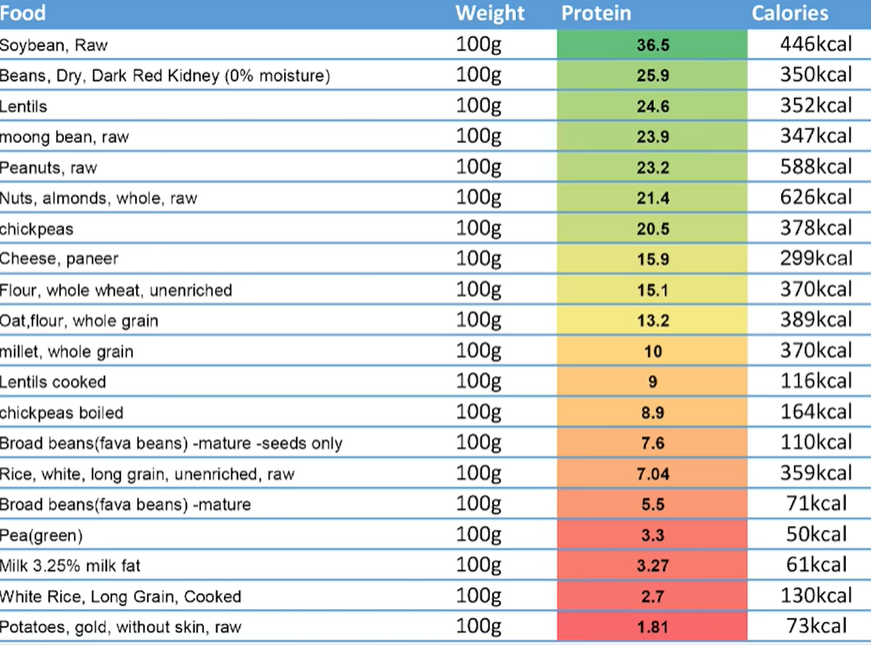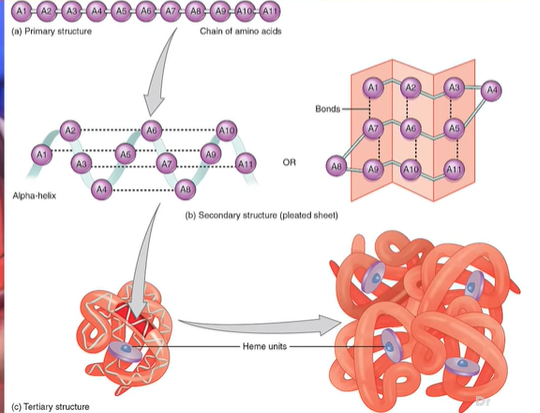Did you know that producing just 1 kg of animal protein requires about 6 kg of plant protein to feed the animal? That’s not only inefficient but also puts immense pressure on our planet’s resources. Meat production contributes significantly to greenhouse gas emissions, consumes massive land and water, and is one of the major factors driving climate change.
As a result, more and more people around the world are shifting from animal-based proteins to plant-based alternatives. But how effective are these plant proteins? Are they nutritionally equivalent? Let’s break it down.
What Is Plant Protein?
Plant protein refers to the protein derived from vegetables, pulses, legumes, grains, seeds, and nuts. Unlike animal proteins, which are often complete, many plant proteins are considered “incomplete” as they may lack one or more essential amino acids.
To truly understand plant proteins, we need to look at two key aspects:
-
Protein Quantity – How much protein is in 100g of the food item?
-
Protein Quality – Does it contain all essential amino acids? Is it easily digestible and absorbed?
Understanding High-Quality vs High-Quantity Protein

High-Quality Protein
A protein is considered high-quality if it contains all 9 essential amino acids in the right proportions and is easily digestible. Essential amino acids are those that your body cannot produce on its own and must be obtained through diet.
The 9 Essential Amino Acids:
-
Histidine
-
Isoleucine
-
Leucine
-
Lysine
-
Methionine
-
Phenylalanine
-
Threonine
-
Tryptophan
-
Valine
If any of these is missing or present in low amounts, your body cannot fully utilize the protein – even if the food is rich in it.
High-Quantity Protein
This simply means a food item that contains a large amount of protein per 100 grams. But high quantity doesn’t always mean high quality.
Quantity-Wise: Top Plant-Based Protein Sources (Per 100g)

-
Soybean – 36.5g
-
Beans (various types) – ~25.9g
-
Lentils, Chickpeas, Almonds – ~20-25g
-
Peas – ~5g
-
Potatoes – ~1.8g
-
Milk (for comparison) – ~3.2g
From a purely quantity perspective, soybeans top the chart. But when you factor in quality, things change dramatically.
How Do We Measure Protein Quality?
To assess the quality of a protein, scientists use a scoring system called:
DIAAS – Digestible Indispensable Amino Acid Score
This score measures:
-
Presence of all 9 essential amino acids
-
How well they’re digested and absorbed
DIAAS Score Meaning:
-
≥ 100: Excellent protein (complete and well-digested)
-
75 – 99: Good protein but may lack in one or more amino acids
-
< 75: Incomplete protein
DIAAS Score Examples: Which Plant Proteins Are Best?
| Food Source | DIAAS Score | Limiting Amino Acid(s) |
|---|---|---|
| Casein (Milk) | 117 | None – Complete Protein |
| Potato | 100+ | None – Surprisingly high |
| Soybean | 91 | Methionine + Cysteine |
| Peas | 70 | Methionine + Cysteine |
| Beans/Lentils | 75–80 | Sulphur-containing amino acids |
| Wheat, Rice | <75 | Lysine |
Surprisingly, potatoes, though low in protein quantity, offer excellent protein quality.
Amino Acid Deficiencies in Plant Proteins
-
Grains and Cereals – Typically lack Lysine
-
Pulses and Beans – Usually deficient in Methionine and Cysteine
If you rely solely on either grains or pulses, you’re likely missing essential amino acids.
Smart Combinations to Make a Complete Protein
Here’s how you can combine different plant sources to get a complete protein:
-
Rice + Lentils (Dal Chawal) – Combines methionine from rice and lysine from lentils
-
Wheat + Pea (60:40 ratio) – DIAAS score improves to 85
-
Wheat + Pea + Potato (25:25:50) – DIAAS score reaches 100
-
Soybean + Grains (Oats/Barley) – Complements amino acid deficiencies
Pro tip: Traditional food pairings like Rajma-Chawal, Khichdi, and Aloo-Matar with Roti make complete protein meals without you even realizing it!
Milk Protein: A Natural Complete Protein
Casein, the primary protein in milk, is one of the highest quality proteins with a DIAAS score of 117. It’s complete, easily absorbed, and supports muscle and tissue repair. Mixing dairy with plant-based food boosts protein value.
How Much Protein Do You Really Need?
-
The average adult needs 0.8–1.0 grams per kg of body weight.
-
That’s about 50–70g per day for most people.
Example:
If you weigh 60kg, aim for 48–60g of protein daily.
Potato has just 1.8g per 100g, so you’d need nearly 4 kg of potatoes to meet your daily needs — clearly impractical!
Benefits of Switching to Plant-Based Protein
Shifting to plant-based protein isn’t just better for the planet — it’s better for you, too:
✅ Heart Health
Plant proteins help keep your LDL cholesterol (bad cholesterol) low, reducing the risk of heart disease and stroke.
✅ Weight Management
Plant-based eaters tend to have lower body mass index (BMI) and better metabolic health.
✅ Diabetes Control
Plant proteins help regulate blood sugar and may prevent type 2 diabetes.
✅ Kidney Support
Plant-based protein is easier on your kidneys, especially important for people with kidney issues.
✅ Lower Cancer Risk
Studies show that people consuming red and processed meat have a higher risk of colorectal cancer compared to those eating plant-based proteins.
Real Study Backing the Benefits
A major study in the USA followed over 600,000 people aged 50–70 years for 15–20 years. It found that:
-
Those who consumed plant-based protein had lower mortality rates from heart disease and stroke
-
Red meat eaters had a higher risk of colorectal and vascular cancers
So, What’s the Bottom Line?
Plant-based proteins can absolutely meet your nutritional needs, but you need to be smart about combining them.
Most plant sources lack at least one essential amino acid, so variety is key.
✔ Smart Pairings = Complete Proteins
Mix pulses, grains, and starchy vegetables like potatoes to build complete protein meals naturally.
✔ Check for DIAAS Scores
Look for combinations that cover each other’s amino acid gaps. This ensures your body gets what it needs to repair, build, and thrive.
✔ Boost with Dairy or Soy
Dairy and soy are your best bets among high-quality vegetarian proteins.
Conclusion: Plant Protein is Powerful — When Combined Right
Plant-based diets are not only sustainable and eco-friendly, but they can also be nutritionally complete when properly balanced. So next time you’re building your meal, think beyond just quantity — focus on quality, variety, and absorption.